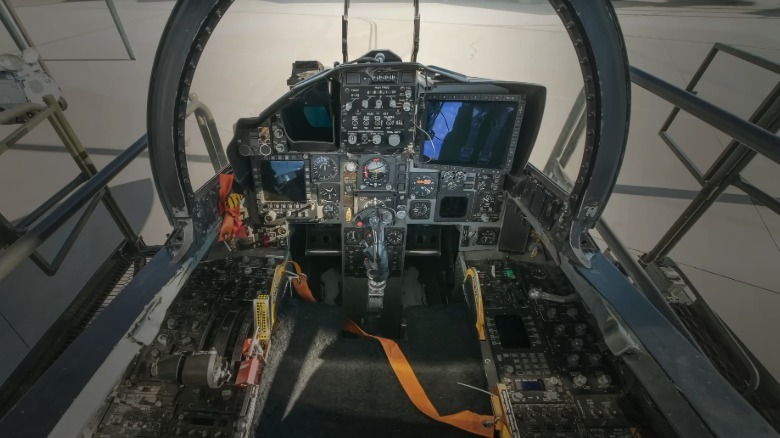What Does The Inside Of An F-15 Eagle Fighter Jet Look Like?
Ever since it first became part of American air power in 1974, the F-15 Eagle has been one of the most formidable fighter aircraft in the sky. The F-15 Eagle is exceedingly fast, with a top speed of Mach 2.5. The Eagle has been used for fighter combat where it has a perfect "kill" ratio of 104 to 0, seeing extensive action during conflicts like Operation Desert Storm and with the Israeli Air Force. Additionally, the F-15 has been used as a fighter bomber under the F-15E Strike Eagle configuration. It's ultra adaptable, and will likely stay in service in one form or another for several more years to come.
Unlike aircraft like the F-22 and F-35, the Eagle isn't shrouded in mystery. The design is also over 50 years old and used by a number of different countries worldwide, so it bears asking: "What does the cockpit look like?" What controls and instruments are available to an Eagle pilot that allow them to complete the mission? Fortunately, many pilots have flown the F-15 and are willing to share their expertise.
What do all of those buttons do?
Retired United States Air Force Colonel Andrea Themely worked with Ars Technica and broke down more or less exactly what every button did in the cockpit of an F-15C (there are over 200 of them), and what you are looking at when you sit behind the flight stick. As with any well designed piece of equipment, all of the important controls are easy to reach. The flight stick for controlling the aircraft and firing the weapons sits right in front of the pilot between their legs. At the pilot's feet are the rudder controls, and to the pilot's left is the throttle and countermeasures.
To the right is the F-15's GPS system, and directly ahead of the pilot is the heads up display that is configurable to give the pilot all of the important bits of information that they need. To the top left and right are configurable displays that can not only give radar and directional instructions, but the displays can also show weapons data and assist in targeting missiles, bombs, or guns.
For creature comforts, the F-15 has a single HVAC vent right behind the flight stick. It's a cramped cabin and there's a lot of instrumentation crammed into a small space; you can thank the F-15's engineers and the pilots who actually fly the plane for making it all translate into a coherent fighting platform.

